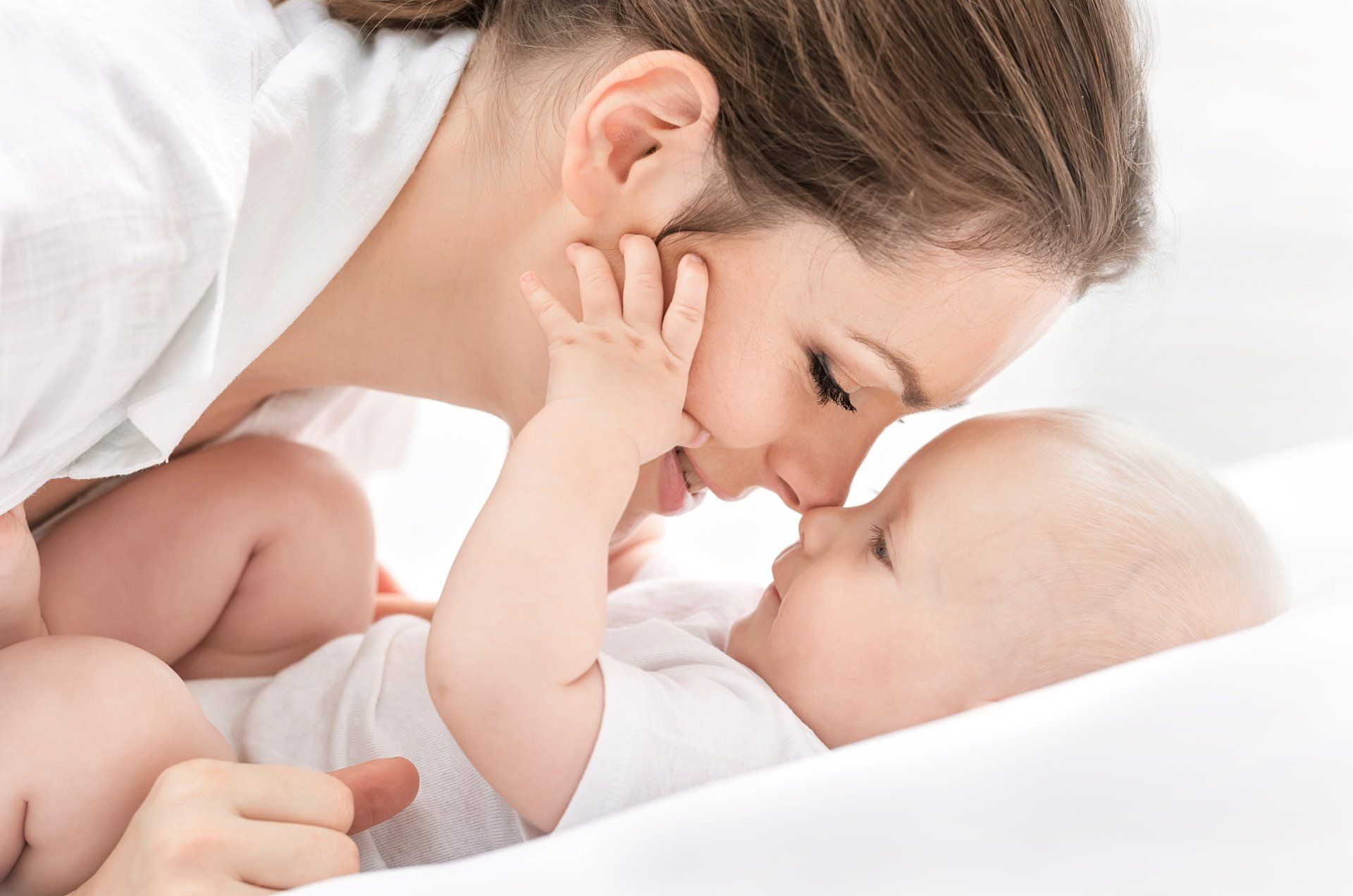The Science of Love
What neuroscience is teaching us about attachment?
Updated November 2025
- An overactive amygdala, keeping the child in “fight-or-flight” mode.
- A smaller hippocampus, making it harder to calm down after stress.
- Elevated cortisol levels, which can affect attention, mood, and immunity.
- The bond between caregiver and baby shapes brain architecture for life.
- Secure attachment builds neural pathways for empathy and self-regulation.
- The right brain dominates in early years, storing emotional “blueprints.”
- Mindful, attuned therapy can rewire the adult brain through new experiences.
- Emotional connection isn’t just comforting — it’s biological nourishment.
References:
Ainsworth, M. D. S. (1963), The development of mother-infant interaction. In B. M. Foss (Ed.), Determinants Of Infant Behaviour. Oxford, England: Wiley.
Baron-Cohen, S. (1998), Does the study of autism justify minimalist innate modularity? Learning And Individual Differences, 10, 3, pp. 179-191.
Bowlby, J. (1969), Attachment and loss: Vol. 1. New York, NY: Basic Books.
Bowlby , J. (1982), Attachment and loss: Vol. 2. New York, NY: Basic Books.
Bowlby, J. (1988), A secure base: Parent-child attachment and healthy human development. New York, NY: Basic Books.
Cozolino, L. J. (2002), The Neuroscience Of Psychotherapy: Building And Rebuilding The Human Brain, New York, NY: Norton.
Damasio, A. R. (2003), Looking for Spinoza. New York, NY: Harcourt.
DeYoung, P. A. (2015), Understanding And Treating Chronic Shame: A Relational/Neurobiological Approach, New York, NY: Routledge/Taylor & Francis Group.
Fonagy, P., Gergely, G., Jurist, E. L. and Target, M. (2002). Affect regulation, mentalization, and the development of the self. New York, NY: Other Press.
Fonagy, P., and Target, M. (2006). The mentalization focused approach to self pathology. Journal of Personality Disorders, 20(6), 544-576.
George, C., Kaplan, N., & Main, M. (1984/1985/1996). The Adult Attachment Interview, Berkeley: University of California, Berkeley.
Howe, D. (2011) . Attachment Across the Life Course, A Brief Introduction. Palsgrave Macmillan
LeDoux, J. E. (1996). The Emotional Brain: The Mysterious Underpinnings Of Emotional Life, New York, NY: Simon & Schuster.
Lakoff , G., and Johnson, M. (1999). Philosophy in the flesh: The embodied mind and its challenge to western thought. New York, NY: HarperCollins.
Lipton, B., and Fosha, D. (2011). Attachment as a transformative process in AEDP: Operationalizing the intersection of attachment theory and affective neuroscience. Journal Of Psychotherapy Integration, 21, 3, pp. 253-279.
Lyons-Ruth, K. (2006). The interface between attachment and intersubjectivity: Perspective from the longitudinal study of disorganized attachment. Psychoanalytic Inquiry, 26, 4, pp. 595-616.
Lyons-Ruth, K (1999). Attachment and Psychopathology. Infant Mental Health Journal, 19, 4, pp. 451-453.
Marmarosh, C. L. (2015). Emphasizing the complexity of the relationship: The next decade of attachment-based psychotherapy research. Psychotherapy, 52, 1, pp. 12-18.
Obegi, J. H. (2009). Attachment Theory and Research in Clinical Work with Adults. London: Guilford Press.
Petit, T., and Ivy, G. (1988). Neural plasticity: A lifespan approach. New York, NY: Alan R. Liss.
Polan, H., and Hofer, M. (1999). Polan, H, and Hofer, M 1999, Maternally directed orienting behaviors of newborn rats. Developmental Psychobiology, 34, 4, pp. 269-279
Raskin. S, Mills, G., and Garbarino, J. (2011). Practice-related changes in brain activity. Neuroplasticity and rehabilitation, pp. 103-113 New York, NY: Guilford Press.
Rosier, J. (2015). What has neuroscience ever done for us? The Psychologist, 28, 4, pp. 284-287.
Rothschild, B. (2000). The body remembers. New York, NY: Norton.
Schore, A. N. (1994). Affect regulation and the origin of the self: The neurobiology of emotional development. Hillsdale, NJ: Erlbaum.
Schore, A. N. (1996). The experience-dependent maturation of a regulatory system in the orbital prefrontal cortex and the origins of developmental psychopathology. Development and psychopathology, 8, 59-87.
Schore, A. N. (2002). Advances in neuropsychoanalysis, attachment theory, and trauma research: Implications for self psychology. Psychoanalytic Inquiry, 22, 433-484.
Schore, A. N. (2003). Affect regulation and disorders of the self. New York, NY: Norton.
Schore, A. N. (2009). Right brain affect regulation: An essential mechanism of development, trauma, dissociation, and psychotherapy. In D. Fosha, D. J. Siegel and M. F. Solomon (Eds.), The healing power of emotion: Affective neuroscience, development, clinical practice, (Chap. 5). New York, NY: Norton.
Siegel, D. J. (1999). The developing mind: Toward a neurobiology of interpersonal experience. New York, NY: Guilford Press.
Siegel, D. J. (2001). Memory: An overview with emphasis on the developmental, interpersonal, and neurobiological aspects. Journal of the American Academy of Child and Adolescent Psychiatry, 40(9), 997-1011.
Siegel, D. J. (2003) An interpersonal neurobiology of psychotherapy: The developing mind and the resolution of trauma. In M. F. Solomon and D. J. Siegel (Eds.), Healing trauma: Attachment, trauma, the brain and the mind (pp. 1-54). New York, NY: Norton.
Siegel, (2006). Siegel, D.J. (2006). An interpersonal neurobiology approach to psychotherapy: How awareness, mirror neurons and neural plasticity contribute to the development of well-being. Psychiatric Annals, 36(4), 248-258.
Siegel, D. J. (2010). The mindful therapist: A clinician's guide to mindsight and neural integration. New York, NY: Norton
Stern, D. (1985). The interpersonal world of the infant. New York, NY: Basic Books.
Trevarthen (2001). Intrinsic motives for companionship in understanding: Their origin, development, and significance for infant mental health. Infant Mental Health Journal, 22, 95-131.
Van Der Kolk, B. A., Roth, S., Pelcovitz, D., Sunday, S., and Spinazzola, J. (2005). Disorders of extreme stree: The empirical foundation of a complex adaption to trauma. Journal of traumatic stress, 18, 389-399.
Wallin, D. J. (2007). Attachment in Psychotherapy. New York, NY: The Guilford Press.
Winnicott, D. W. (1949). The Ordinary Devoted Mother. In Winnicott, C. Shepherd, R. and Davies, M. (eds) Babies and their Mothers. Reading, MA: Addison-Wesley.




